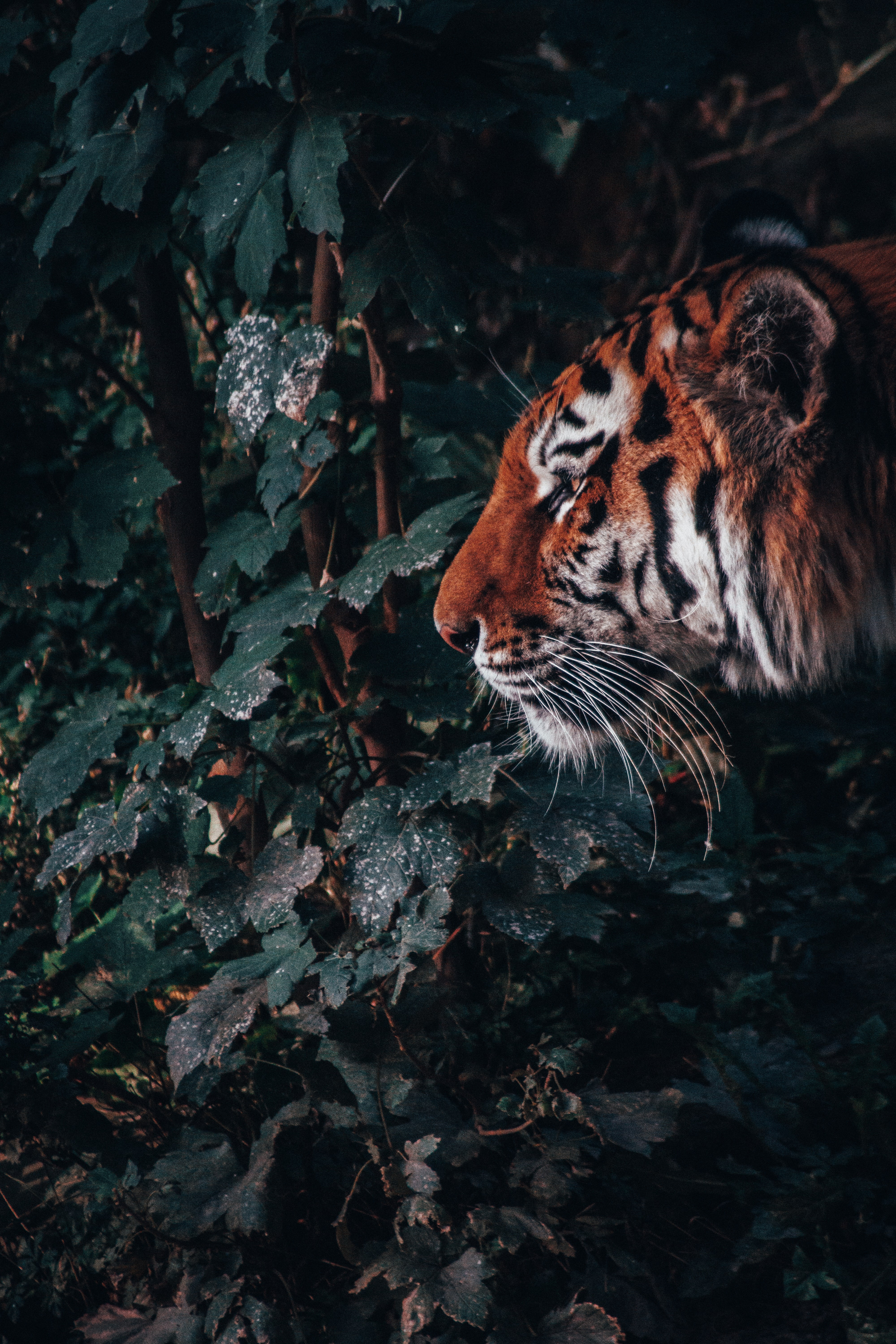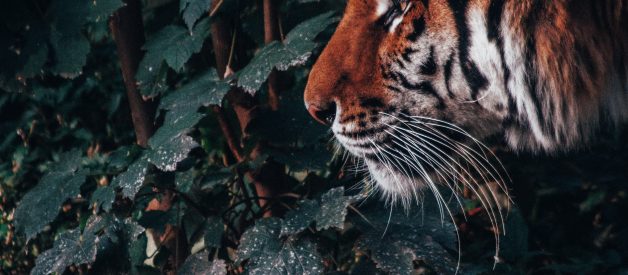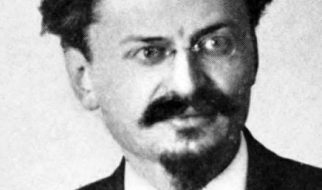This is a strikingly powerful poem about the beautiful and dangerous complexity that can be found within nature. Blake deconstructs all the wondrous aspects of a Tiger in order to better understand Nature itself, as through this process he feels that he can further appreciate the God whom he believes made everything on Earth. The poem is tailored towards GCSE / iGCSE students (CIE / Cambridge, Edexcel, AQA, WJEC / Eduqas, OCR, CCEA) but it is also useful for higher levels ? A Level and beyond.
Thanks for reading! If you?re studying Edexcel and you found this useful, you can take a look at our full poetry course here:
https://scrbbly.teachable.com/p/edexcel-igcse-poetry
 Photo by Benjamin Raffetseder on Unsplash
Photo by Benjamin Raffetseder on Unsplash
The Tyger
Tyger Tyger, burning bright,
In the forests of the night;
What immortal hand or eye,
Could frame thy fearful symmetry?
.
In what distant deeps or skies.
Burnt the fire of thine eyes?
On what wings dare he aspire?
What the hand, dare seize the fire?
.
And what shoulder, & what art,
Could twist the sinews of thy heart?
And when thy heart began to beat,
What dread hand? & what dread feet?
.
What the hammer? what the chain,
In what furnace was thy brain?
What the anvil? what dread grasp,
Dare its deadly terrors clasp!
.
When the stars threw down their spears
And water?d heaven with their tears:
Did he smile his work to see?
Did he who made the Lamb make thee?
.
Tyger Tyger burning bright,
In the forests of the night:
What immortal hand or eye,
Dare frame thy fearful symmetry?
William Blake
VOCABULARY
Immortal ? living forever
Thy ? your
Frame ? to put a frame around, in this case to bring into being / make solid
Symmetry ? when something has perfectly equal or mirrored parts
Sinew ? the tough connecting tissue
Thee ? you
Thine ? your (yes, there are lots of words that mean ?you? or ?your?!)
STORY/SUMMARY
The speaker is talking directly to the tiger, although he is afraid of him he asks an important question ? what kind of God could dare to make something so beautiful, powerful and terrifying? We could say that he feels the tiger is sublime (causing the feelings of respect and fear because it is beautiful but terrifying at the same time). In Stanza 2, he asks if the God that made him plucked fire from the skies or deepest parts of the ocean to make the tiger. In Stanza 3, he says it is a work of art the way in which his muscles (?sinews?) and heart have been created. Stanza 4 imagines the tiger being crafted in a smithy, envisioning the God as a blacksmith who shapes and crafts his animals using fire and tools. In Stanza 5, the speaker says the stars must have cried at the tiger?s beauty when he was first made, and he wonders if the God himself smiled and was proud. He finds it hard to understand how the same God that made a lamb could make a tiger. Finally, the last stanza repeats the ideas of the first, being impressed at how this God dared to make the tiger.
SPEAKER/VOICE
The speaker of the poem, who is likely Blake himself, is talking directly to the tiger, asking the question of how he was created. He is in awe of the tiger?s beauty, but also quite afraid of his power and ferociousness. His appreciation for the tiger extends even further into an appreciation for the God who made him ? he is impressed that he had the vision and imagination to create something so complex and yet symmetrical (tigers don?t actually have symmetrical patterning, but it does seem that way when you look at them!).
LANGUAGE
- Rhetorical questions ? ?What the hammer? What the chain, / In what furnace was thy brain? ? the speaker is almost overwhelmed by the tiger and its beauty, asking himself so many questions about how exactly he would have been made.
- ?Did he who made the Lamb make thee?? ? the speaker is in awe that the same God could make something so gentle and small as a lamb, could also make a powerful predatory tiger. The ?Tyger? symbolises ?experience?, the aspects of life that are predatory, powerful, accomplished and dangerous. In contrast, the ?Lamb? represents innocence, purity and goodness. Furthermore there is a double interpretation of the noun ?Lamb? ? it also an allegorical reference to Jesus, who is referred to in the Bible as ?the Lamb of God?, due to his mild, good and pure nature ? as a pacifist and bringer of harmony.
- Semantic field of smithing ? ?furnace? ?hammer? ?chain? ?anvil?- these words create an image of the God at work on creation in a smithy, crafting his world using blacksmith?s tools ? this may be an allegorical reference to Greek mythology, as the God Hephaestus was the god of fire and crafting.
- Semantic field of terror ?fearful? ?dread? ?deadly? ?terrors? ?burning? ? creates an impression of fierceness and horror.
- Apostrophe ? The speaker repeats the phrase ?Tyger Tyger?, which in itself is symmetrical, to show he is directly talking to the animal, but at the same time asking ontological questions (related to the philosophy of being) about the nature of existence and how life is created.
- Interrogative pronoun ? the pronoun ?What? is repeated throughout the poem, showing that the poet is opening up a line of questioning. This also creates a feeling of panic or uncertainty, as the speaker has so many questions about different aspects of the tiger, it feels as though the poem is driven by the speaker?s need to understand more, and his anxiety about the limitations of his own creativity and imagination ? he is frustrated by not fully being able to understand the tiger.
- Visual Imagery ? ?burning bright / In the forests of the night? ? the plosive alliteration of ?burning bright? emphasises the image of the tiger, who moves like a flame through a dark forest as an emblem of fierce and fiery power. The image ?forests of the night?, could be interpreted metaphorically ? it perhaps suggests the darkness at the limitations of our knowledge.
FORM/STRUCTURE
Refrain ? the first stanza is fully repeated at the end, and it forms a chorus or refrain, showing that this is the central idea of the poem that Blake wishes to emphasise ? he is in awe of the beauty and power of the tiger, and wonders what God possibly made him. Only one word changes ? ?could frame? becomes ?dare frame?, it switches to a stronger and more shocking word, almost asking God how dare he make something so powerful and beautiful as a tiger ? the speaker is in awe of both the tiger and the creator that made him.
Rhyming Couplets ? the poem has a rhyming couplet structure (each quatrain has an AABB rhyme scheme), couplets are often used to show love and harmony between two beings, so we can interpret this as a way of Blake showing his appreciation for nature and the universe, as well as complex beings such as tigers. Equally, it may represent the harmony between the spiritual and physical, or between the individual and his universe ? by appreciating the tiger and its qualities despite being afraid of it, Blake is also showing a deeper respect and appreciation for his God.
Regularity ? the poem has a very regular structure ? each stanza is a quatrain (4 lines long) with a regular metre of 7 syllables per line. The line ?Could frame thy fearful symmetry?, which is then repeated with the first word being changed to ?Dare?, is the only exception to this pattern ? it has eight syllables in the line, so we can call it hypometric ? it extends past the natural metre. This emphasises the line and shows that it is perhaps the most significant idea in the poem ? Blake finds it hard to understand how a tiger could be created, the imagination and skill required to create a tiger is certainly beyond his own human capabilities, and he is in awe of the God who created it.
ATTITUDES
Nature is sublime ? the ?sublime? is an idea that is often used in Romantic poetry, it refers to something that is extremely powerful, both inspirational and terrifying at the same time. The speaker feels like the tiger (and all of Nature, which he views as being created by God) is a sublime creation ? he marvels at its beauty but at the same time fears its complexity and power.
By worshipping and appreciating nature, we can develop a deeper sense of spirituality ? Blake was a highly religious poet, and he felt that nature was an example of God?s handiwork. In the modern world we often see science and religion as oppositional, but Blake saw science and developing a detailed understanding of our world as a way to get closer to God and to better appreciate his power
Humans are far less powerful than nature / God ? Part of feeling the ?sublime? is to have the sense that nature (and/or God, if you?re religious) is far more powerful and complex than an individual human such as yourself could ever be. You feel in awe of a higher power, that works ways far beyond your understanding. This is particularly present in the poem when Blake starts questioning how the tiger could have been made (?What the hammer? What the chain,?) and finally feels overwhelmed when he realises the same force that made a tiger also created the humble ?Lamb?
Science and religion can be connected ? in the modern world, many people often view science and religion as diametrically opposed to one another. However, this separation of thought happened during the Victorian period, partly as a result of Darwin?s Origin of Species, which proposed the theory of evolution as an explanation for how nature could create complex life out of itself. Interestingly, Darwin himself was also religious, and didn?t intend for his theory to support the ideas of atheism (not believing in a god or higher power). Blake, writing before this time, would certainly have believed that science is a tool we can use to greater understand how God?s work is present in the world around us, so he interprets understanding and questioning nature as a way to become closer to God (this is also a central idea in Romantic Literature). Modern religious readers who also have an interest in science would interpret the poem similarly to Blake.
CONTEXT
- Romanticism ? Blake was considered a Romantic poet ? when this word is written with a capital ?R? it means something different from ?romantic?. Romantic literature explore the power of nature and embraces the extreme forces and emotions that are present in the world ? by being in touch with these forces, it is seen as a way to better experience life and also become closer to God and his work. Romantic poets often were religious and spiritual, but they rejected churches and their society?s way of worshipping God ? Blake, for example, thought that individuals should always develop a personal relationship with their God instead of relying on priests to tell them how to worship. He had dreams and visions of God and angels speaking to him, and he tried to recount these visions in the form of poetry and writing, feeling like he was offering humanity insight into the divine.
THEMES
Nature
Spirituality
Fear
Sublime
Beauty
Creation
Science and Religion
Thanks for reading! If you?re studying Edexcel and you found this useful, you can take a look at our full poetry course here:
https://scrbbly.teachable.com/p/edexcel-igcse-poetry


